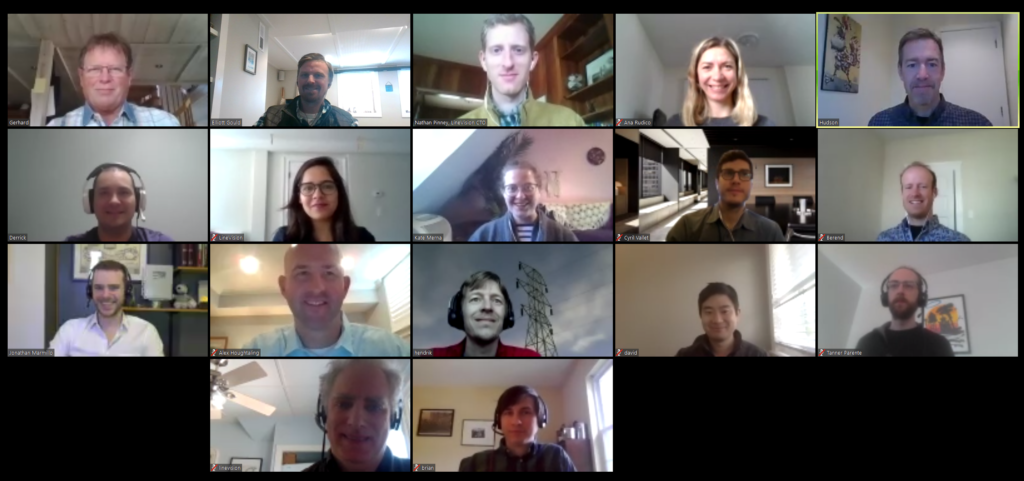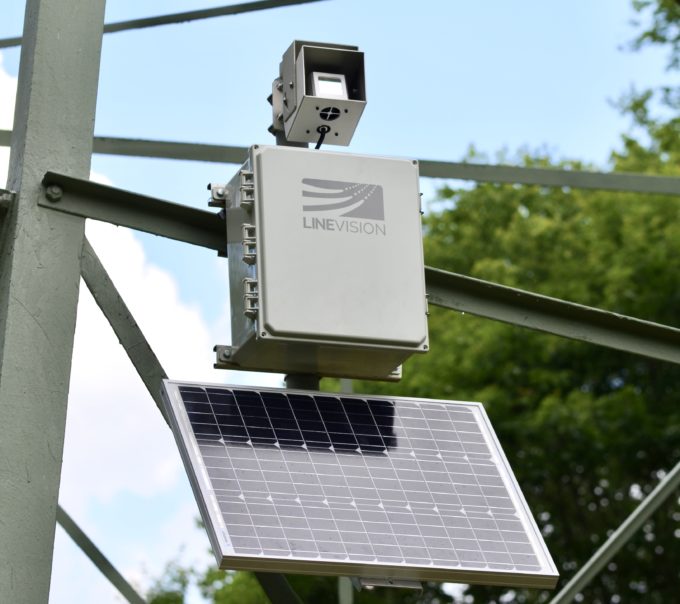Like most companies, LineVision faced unprecedented headwinds in the Spring of 2020. The transmission line-monitoring startup saw its electric utility customers bracing for a period of economic uncertainty, and its team had to transition to remote work while adjusting to the realities of a pandemic.
It hardly seemed like the start of a year for stunning growth, but that’s exactly what it turned into for LineVision. The company expanded to Europe, increased from 14 to 25 employees, and secured numerous follow-on deals with utilities. In January 2021, it was named one of three energy startups to watch by pv magazine.
The company offers overhead line monitoring solutions that tackle three major challenges with existing grid infrastructure: capacity, safety, and reliability.
LineVision calculates a dynamic line rating, which allows utilities to accurately understand how much energy they can safely transmit and take advantage of the wind’s cooling effect, increasing capacity on existing lines by up to 40 percent, according to LineVision CEO and Co-founder Hudson Gilmer. He explains that unlocking capacity is critical to adding more renewables to the grid, and LineVision’s sensor-based solutions require a fraction of the time and money that would be needed to expand capacity with traditional line construction or upgrade methods.
Another major benefit of monitoring is increased safety. LineVision’s sensors can detect problems with the lines, such as if they’re hanging too low, have suffered storm damage, or risk igniting wildfires. The startup’s technology also monitors asset health, which is important given that most transmission lines in the United States were built more than 40 years ago.

In 2020, utilities saw the importance of remote line monitoring, according to Gilmer. He also credits LineVision’s hardworking, supportive, and mission-driven team, which he says “didn’t miss a beat” transitioning to the new working realities of COVID-19.
“Restrictions on travel for our utility customers have illustrated the benefit of remote monitoring—instead of having to send a crew out to walk a line and do inspections, we can detect anomalies and pinpoint issues,” he says. “But there are broader factors. I think we would have grown even without COVID-19 because of the ambitious renewable and carbon reduction targets that are being set at the state, federal, and international levels that really require us to look to advanced technologies to get the most out of the existing grid.”
Several of LineVision’s early utility clients expanded their deployments and added applications in the past year, including Dominion Energy and Greentown Labs partner National Grid. The company also started new projects with the Tennessee Valley Authority and Xcel Energy, expanded to Europe, and was awarded a contract by the FARCROSS (“Facilitating Regional CROSS-Border Electricity Transmission through Innovation”) consortium, deploying its technology with participating utilities in Hungary, Greece, Slovenia, and Austria.
To meet customer demand, LineVision has expanded its lab space at Greentown to conduct testing and fulfillment, shipping its products directly to utility clients around the world.
“We believe it’s only a matter of time before monitoring of these assets becomes standard practice in the industry,” Gilmer says. “Deploying relatively low-cost sensors and analytics is a slam dunk in terms of improving the capacity, safety, and resilience of the grid.”

